
Na Cai
@caina89.bsky.social
Assistant Prof at D-BSSE, ETH Zurich, studying genetics of psychiatric disorders
www.nacailab.com
www.nacailab.com
Congratulations, very exciting! 🎉
July 26, 2025 at 5:54 AM
Congratulations, very exciting! 🎉
Link to GitHub page: github.com/caina89/psyc...

GitHub - caina89/psychCE: Code used to implement coordinated epistasis on psychiatric disorders
Code used to implement coordinated epistasis on psychiatric disorders - caina89/psychCE
github.com
July 24, 2025 at 5:24 AM
Link to GitHub page: github.com/caina89/psyc...
Link to the preprint: www.medrxiv.org/lookup/conte...

Genetic risk effects on psychiatric disorders act in sets
Genetic studies of psychiatric disorders have typically assumed that all genetic effects contribute additively to disease liability. However, it is likely that psychiatric disorders have unrecognized ...
www.medrxiv.org
July 24, 2025 at 5:24 AM
Link to the preprint: www.medrxiv.org/lookup/conte...
This work would not have been possible if not for the persistent efforts of @jolienrietkerk.bsky.social Andy Dahl, Jonathan Flint, Andrew Schork and many others, as well as the data from participants in @ukbiobank.bsky.social and IPSYCH. We hope it will be informative to the field. 12/n
July 24, 2025 at 5:24 AM
This work would not have been possible if not for the persistent efforts of @jolienrietkerk.bsky.social Andy Dahl, Jonathan Flint, Andrew Schork and many others, as well as the data from participants in @ukbiobank.bsky.social and IPSYCH. We hope it will be informative to the field. 12/n
Though our investigations and findings are centered on psychiatric disorders, the implications are generalizable to all complex traits and diseases, especially those with heterogeneous architectures and unclear diagnostic boundaries. 11/n
July 24, 2025 at 5:24 AM
Though our investigations and findings are centered on psychiatric disorders, the implications are generalizable to all complex traits and diseases, especially those with heterogeneous architectures and unclear diagnostic boundaries. 11/n
Overall, our work provides a novel metric, the CE test, for informing diagnostic boundaries. Our results show that genetic effects on psych disorders act in sets, and calls for a re-evaluation of current approaches and assumptions. 10/n
July 24, 2025 at 5:24 AM
Overall, our work provides a novel metric, the CE test, for informing diagnostic boundaries. Our results show that genetic effects on psych disorders act in sets, and calls for a re-evaluation of current approaches and assumptions. 10/n
Finally, we find that common genetic effects across all five psych disorders, expected to capture common etiological axes among them, forms a cross-order set most plausibly explained by common confounders external to each disorder’s etiology. 9/n
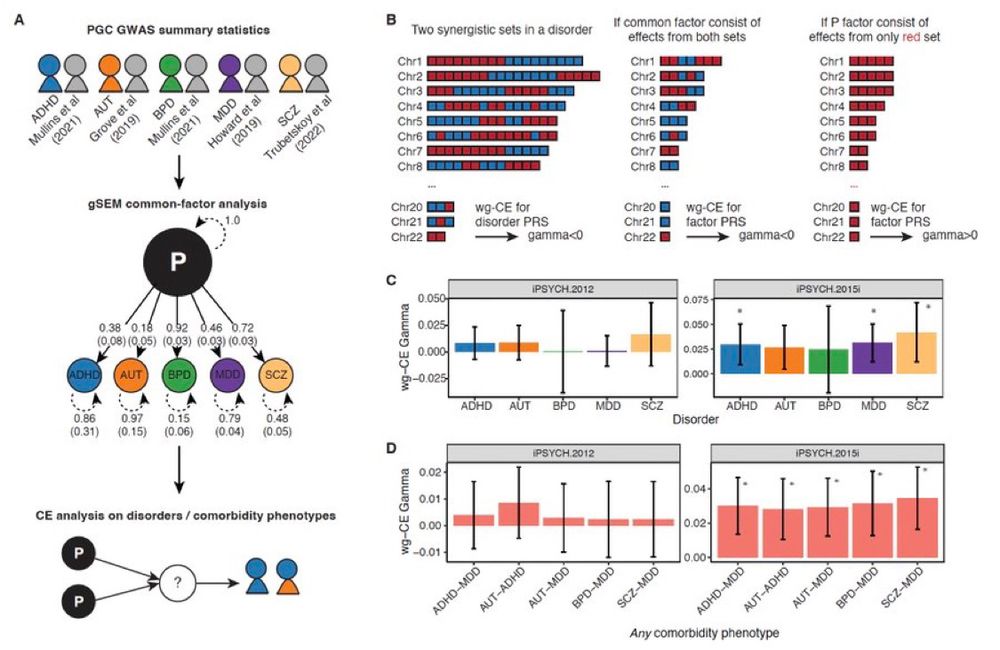
July 24, 2025 at 5:24 AM
Finally, we find that common genetic effects across all five psych disorders, expected to capture common etiological axes among them, forms a cross-order set most plausibly explained by common confounders external to each disorder’s etiology. 9/n
We further show that disorder-specific sets lead to comorbidity between two disorders, refuting the assumption that comorbidity is the result of additive effects of genetic effects on both, exemplified by the expectation that high rGs would lead to high comorbidity. 8/n
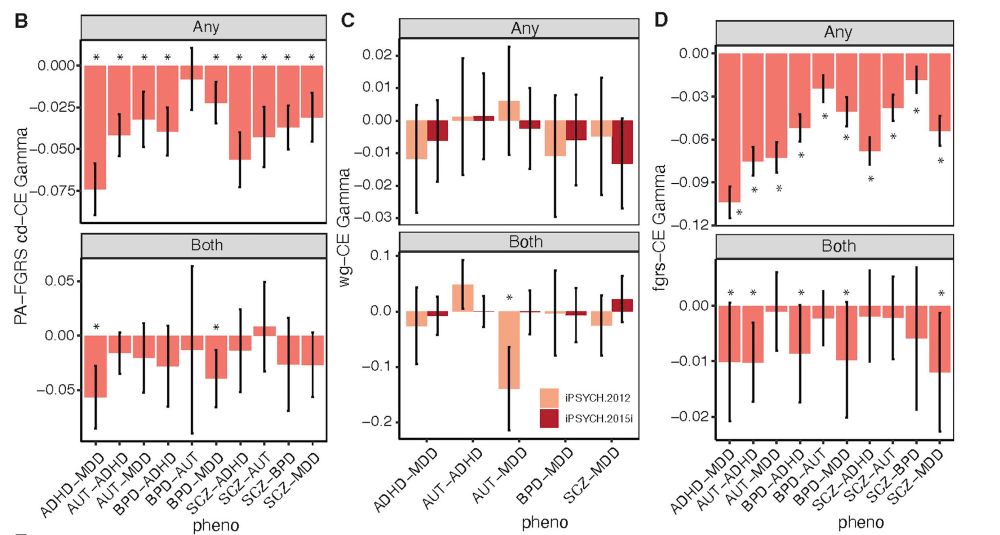
July 24, 2025 at 5:24 AM
We further show that disorder-specific sets lead to comorbidity between two disorders, refuting the assumption that comorbidity is the result of additive effects of genetic effects on both, exemplified by the expectation that high rGs would lead to high comorbidity. 8/n
These findings imply that rGs are insufficient to inform nosology, and that the CE test provides a way to determine whether putative disorders or subtypes should be merged or remain separate diagnostically. 7/n
July 24, 2025 at 5:24 AM
These findings imply that rGs are insufficient to inform nosology, and that the CE test provides a way to determine whether putative disorders or subtypes should be merged or remain separate diagnostically. 7/n
We also show that sets of genetic effects are disorder-specific, despite high genetic correlations (rG) between them. This opposes a well-established conjecture, based on high rG, that clinical boundaries do not reflect their pathogenic processes. 6/n

July 24, 2025 at 5:24 AM
We also show that sets of genetic effects are disorder-specific, despite high genetic correlations (rG) between them. This opposes a well-established conjecture, based on high rG, that clinical boundaries do not reflect their pathogenic processes. 6/n
In our paper, we test for CE in five psychiatric disorders in the @ukbiobank.bsky.social and the iPSYCH dataset using both polygenic risk scores (PRS) and family-based genetic risk scores (FGRS). We find negative CE for 3 out of 5 disorders, demonstrating there are unrecognized subtypes. 5/n
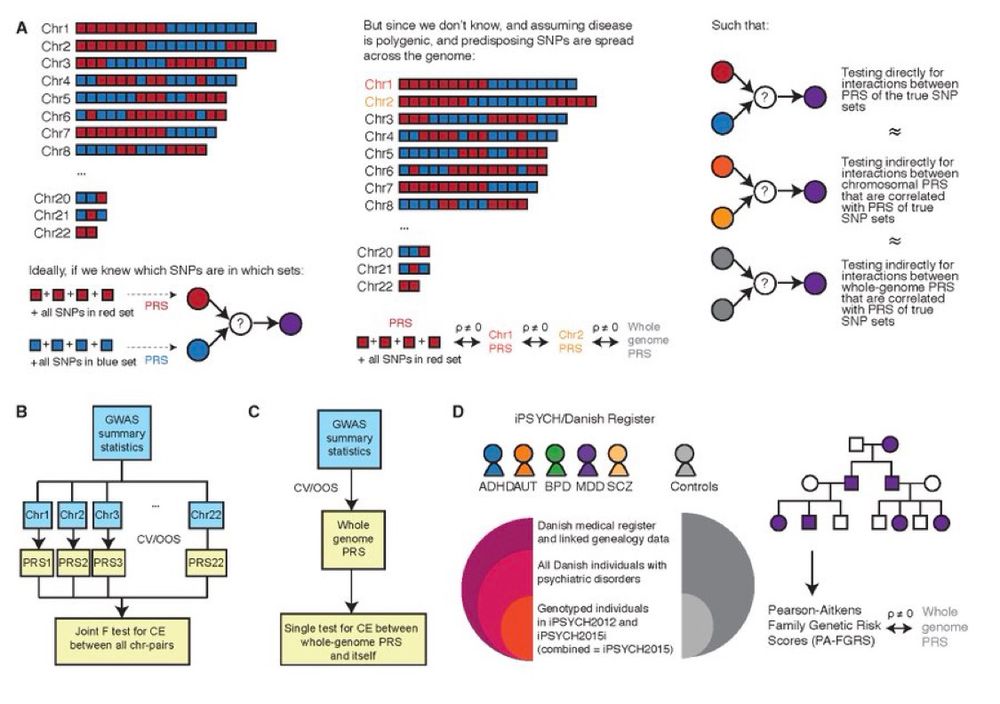
July 24, 2025 at 5:24 AM
In our paper, we test for CE in five psychiatric disorders in the @ukbiobank.bsky.social and the iPSYCH dataset using both polygenic risk scores (PRS) and family-based genetic risk scores (FGRS). We find negative CE for 3 out of 5 disorders, demonstrating there are unrecognized subtypes. 5/n
The existence of these sets induces a structured form of statistical interactions called coordinated epistasis (CE), detailed in previous publications by Andy Dahl, Noah Zaitlen www.pnas.org/doi/10.1073/...; negative CE is seen when there are different sets of genetic effects. 4/n
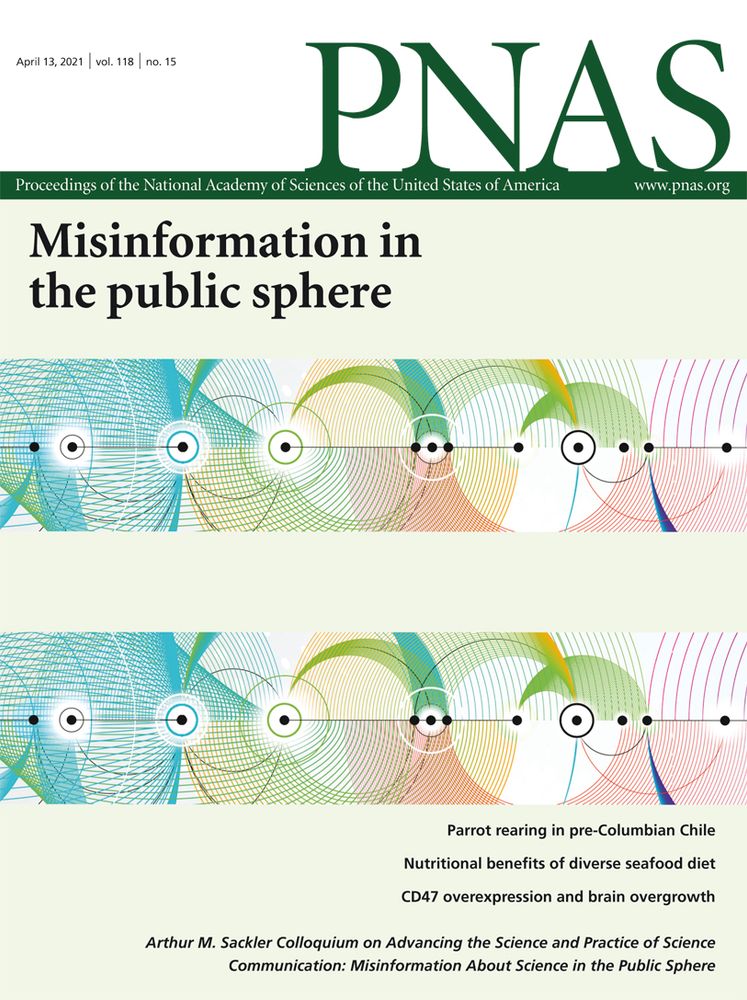
A model and test for coordinated polygenic epistasis in complex traits | PNAS
Interactions between genetic variants—epistasis—is pervasive in model systems and
can profoundly impact evolutionary adaption, population disease d...
www.pnas.org
July 24, 2025 at 5:24 AM
The existence of these sets induces a structured form of statistical interactions called coordinated epistasis (CE), detailed in previous publications by Andy Dahl, Noah Zaitlen www.pnas.org/doi/10.1073/...; negative CE is seen when there are different sets of genetic effects. 4/n
These sets, should they exist, would each drive an unrecognized etiological subtype. Our paper tests for the existence of these sets in five psychiatric disorders. 3/n
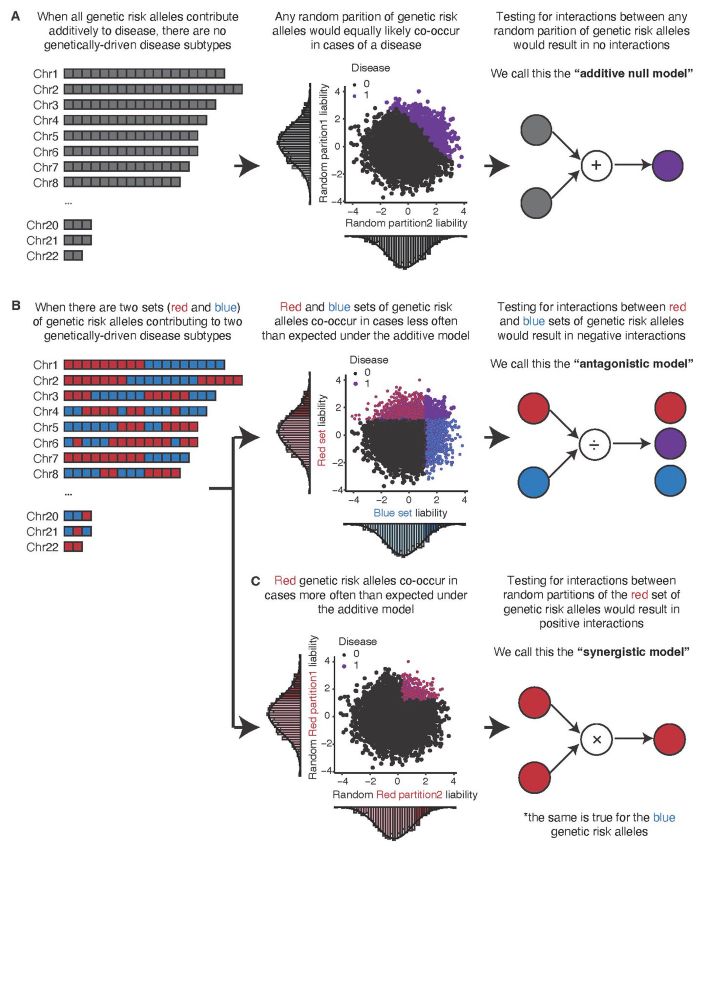
July 24, 2025 at 5:24 AM
These sets, should they exist, would each drive an unrecognized etiological subtype. Our paper tests for the existence of these sets in five psychiatric disorders. 3/n
Our paper addresses a central question in quantgen: whether all genetic variants associated with a complex disease contribute additively to its liability as commonly assumed, or there exists sets of them that co-occur more in certain cases than expected under additivity. 2/n
July 24, 2025 at 5:24 AM
Our paper addresses a central question in quantgen: whether all genetic variants associated with a complex disease contribute additively to its liability as commonly assumed, or there exists sets of them that co-occur more in certain cases than expected under additivity. 2/n
Link to GitHub page: github.com/caina89/psyc...

GitHub - caina89/psychCE: Code used to implement coordinated epistasis on psychiatric disorders
Code used to implement coordinated epistasis on psychiatric disorders - caina89/psychCE
github.com
July 24, 2025 at 5:15 AM
Link to GitHub page: github.com/caina89/psyc...
Link to preprint: www.medrxiv.org/lookup/conte...

Genetic risk effects on psychiatric disorders act in sets
Genetic studies of psychiatric disorders have typically assumed that all genetic effects contribute additively to disease liability. However, it is likely that psychiatric disorders have unrecognized ...
www.medrxiv.org
July 24, 2025 at 5:15 AM
Link to preprint: www.medrxiv.org/lookup/conte...
This work would not have been possible if not for the persistent efforts of @jolienrietkerk.bsky.social Andy Dahl, Jonathan Flint, Andrew Schork and many others, as well as the data from participants in @ukbiobank.bsky.social and IPSYCH. We hope it will be informative to the field. 12/n
July 24, 2025 at 5:15 AM
This work would not have been possible if not for the persistent efforts of @jolienrietkerk.bsky.social Andy Dahl, Jonathan Flint, Andrew Schork and many others, as well as the data from participants in @ukbiobank.bsky.social and IPSYCH. We hope it will be informative to the field. 12/n
Though our investigations and findings are centered on psychiatric disorders, the implications are generalizable to all complex traits and diseases, especially those with heterogeneous architectures and unclear diagnostic boundaries. 11/n
July 24, 2025 at 5:15 AM
Though our investigations and findings are centered on psychiatric disorders, the implications are generalizable to all complex traits and diseases, especially those with heterogeneous architectures and unclear diagnostic boundaries. 11/n

